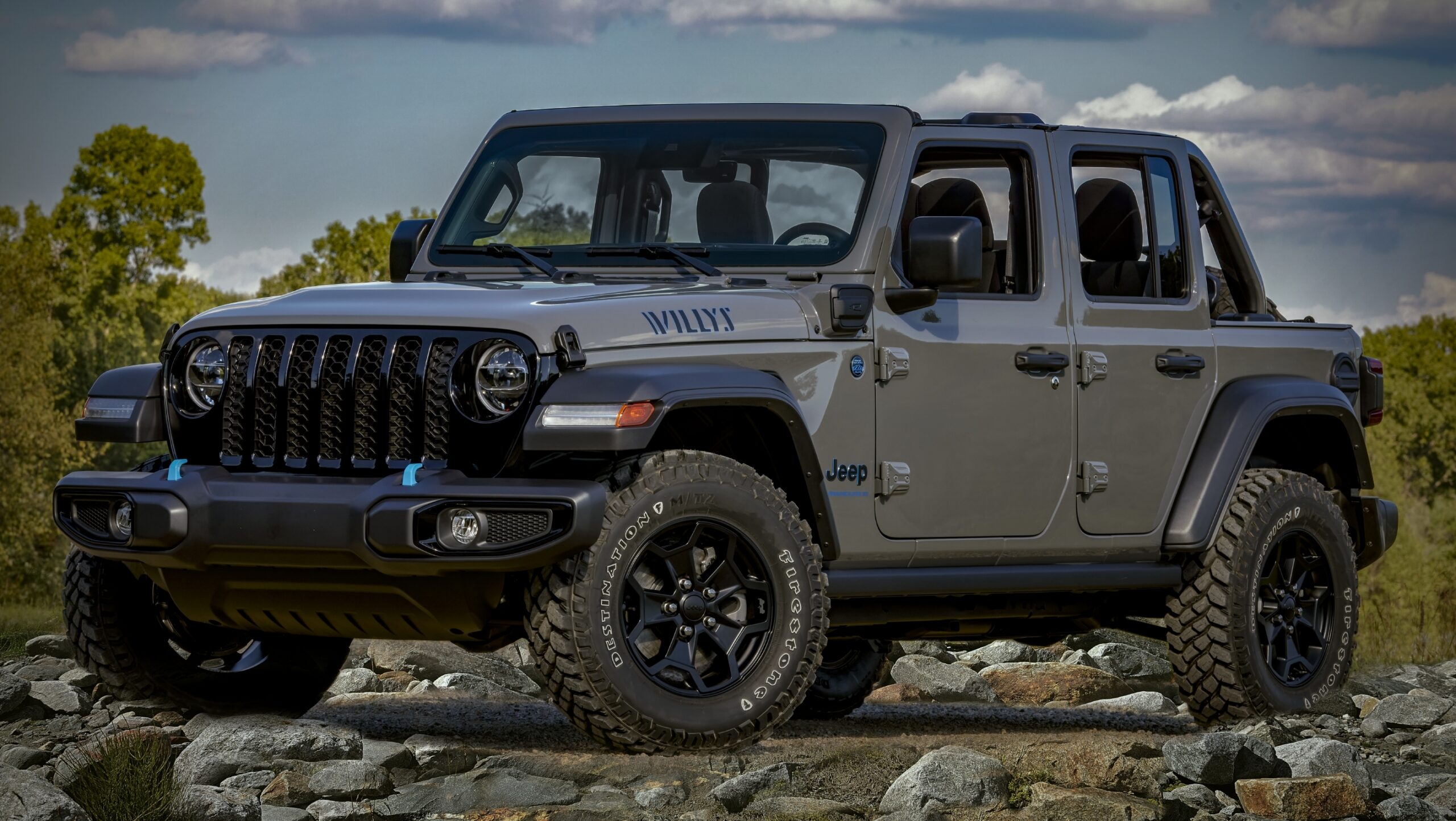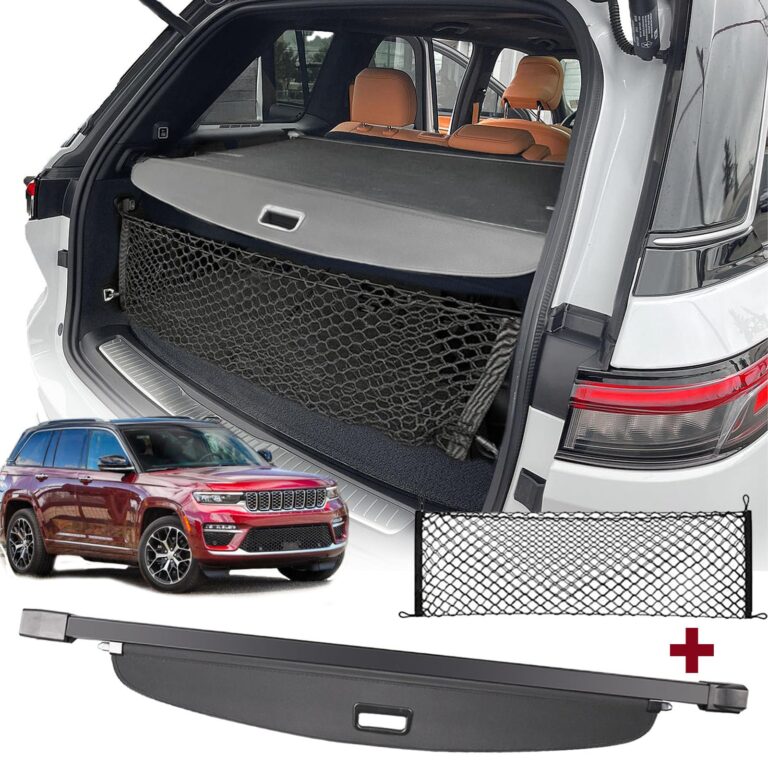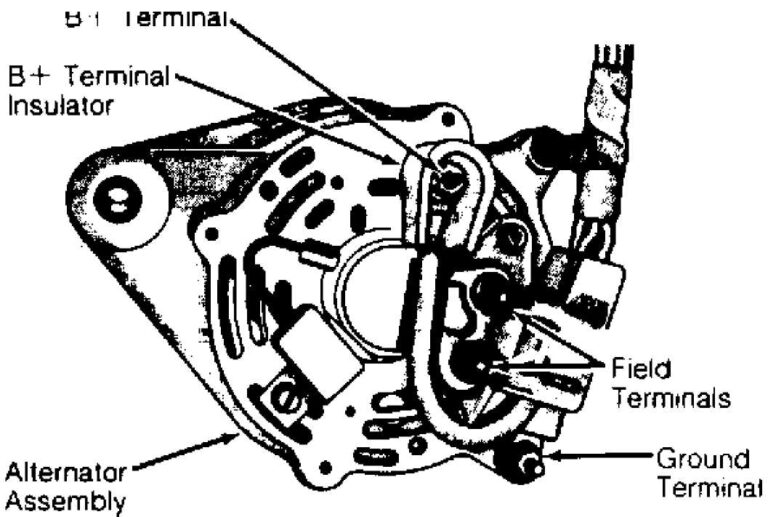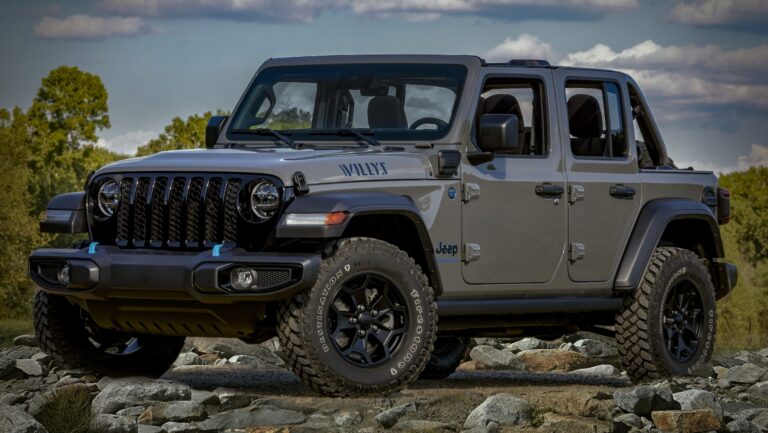Jeep SRT8 Trackhawk For Sale: Your Ultimate Guide to Acquiring the Supercharged SUV Beast
Jeep SRT8 Trackhawk For Sale: Your Ultimate Guide to Acquiring the Supercharged SUV Beast jeeps.truckstrend.com
Introduction: Unleashing the Beast
In the pantheon of high-performance SUVs, few names command as much respect and raw exhilaration as the Jeep Grand Cherokee SRT Trackhawk. More than just an SUV, it’s a supercharged marvel, a testament to American muscle engineering wrapped in a practical, family-friendly package. For those seeking the thrill of a supercar with the versatility of an off-roader (albeit one that prefers asphalt), the Trackhawk is a dream machine. When we talk about "Jeep SRT8 Trackhawk For Sale," we’re not just discussing a vehicle; we’re talking about an opportunity to own a piece of automotive history, a limited-production beast that redefined what an SUV could be. Its relevance lies in its unparalleled combination of luxury, utility, and blistering speed, making it a highly sought-after commodity in the used vehicle market. This comprehensive guide will navigate you through everything you need to know about finding, evaluating, and purchasing your very own supercharged Jeep Grand Cherokee Trackhawk.
Jeep SRT8 Trackhawk For Sale: Your Ultimate Guide to Acquiring the Supercharged SUV Beast
Understanding the Beast: What Makes the Trackhawk Special?
Before diving into the market, it’s crucial to understand what sets the Trackhawk apart from its Grand Cherokee brethren and other performance SUVs. This isn’t just an SRT with a bigger engine; it’s a meticulously engineered powerhouse designed to handle immense power.
The Heart of the Beast: Hellcat Power
At the core of the Trackhawk’s legend is its monstrous 6.2-liter supercharged HEMI V8 engine, directly borrowed from the Dodge Challenger and Charger Hellcat. This beast produces an astounding 707 horsepower and 645 lb-ft of torque, propelling the 5,363-pound SUV from 0 to 60 mph in a breathtaking 3.5 seconds. Its quarter-mile time clocks in at 11.6 seconds, and it boasts a top speed of 180 mph. This incredible power is managed by a robust eight-speed TorqueFlite automatic transmission, sending power to all four wheels through a sophisticated Quadra-Trac active on-demand 4×4 system.
Performance Engineering Beyond the Engine
The Trackhawk’s prowess isn’t just about straight-line speed. To handle its immense power, Jeep engineers extensively upgraded the chassis and suspension. It features a high-performance adaptive damping suspension system with Bilstein shocks, providing exceptional handling and ride comfort across various driving modes. Braking power is equally impressive, with massive 15.75-inch front and 13.78-inch rear Brembo brakes, ensuring confident stopping power even from high speeds. Unique exterior styling, including a sculpted hood with heat extractors, specific front fascia for optimized airflow, and distinct badging, further differentiate it. Inside, performance-oriented seats, carbon fiber accents, and a comprehensive Uconnect infotainment system with SRT-specific performance pages enhance the driver and passenger experience.
The Market for a Jeep SRT8 Trackhawk: Demand and Availability
Given its performance and exclusivity, the Trackhawk occupies a unique space in the automotive market. Finding a "Jeep SRT8 Trackhawk For Sale" requires understanding its market dynamics.

New vs. Used Availability
The Jeep Grand Cherokee Trackhawk was produced from the 2018 to 2021 model years. As of now, it is no longer in production as a new vehicle. This means that any Trackhawk you find for sale will be a used model. This scarcity contributes to its strong resale value and sustained demand.
Factors Influencing Price
The price of a used Trackhawk can vary significantly based on several key factors:
- Mileage: Lower mileage vehicles typically command higher prices.
- Condition: Pristine condition, inside and out, with a clean title and accident history, will fetch a premium.
- Year: Newer model years (e.g., 2021 vs. 2018) might be slightly more expensive due to less wear and potentially remaining factory warranty.
- Maintenance History: A complete and documented service history adds significant value.
- Modifications: Aftermarket modifications can either add or detract from value. Performance mods might appeal to some but deter others concerned about reliability or warranty. Cosmetic mods are subjective.
- Location: Prices can vary regionally based on local demand and supply.
![]()
Where to Look for Your Trackhawk
- Authorized Jeep/Dodge Dealerships: They often take Trackhawks in on trade and offer certified pre-owned (CPO) options, which come with extended warranties and thorough inspections.
- Independent Performance Car Dealerships: Specialized dealerships often deal in high-performance vehicles and may have a selection of Trackhawks.
- Online Marketplaces: Websites like AutoTrader, Cars.com, eBay Motors, CarGurus, and specialized forums (e.g., SRT Hellcat Forum) are excellent resources for private and dealer listings.
- Auctions: Online and physical auctions can sometimes offer deals, but buyer beware – thorough due diligence is even more critical here.
How to Find Your Dream Trackhawk: A Buyer’s Guide
Acquiring a high-performance vehicle like the Trackhawk requires a methodical approach. Follow these steps to ensure a smooth and satisfying purchase.
1. Setting Your Budget
Beyond the purchase price, consider the total cost of ownership. This includes:
- Insurance: High-performance vehicles are expensive to insure. Get quotes before you buy.
- Fuel: The Trackhawk is a gas guzzler, especially with its supercharged engine. Factor in premium fuel costs.
- Maintenance: Specialized parts and labor for a performance vehicle can be higher than a standard SUV.
- Tires: The Trackhawk goes through tires quickly, especially if driven enthusiastically. Performance tires are not cheap.
2. Researching Listings Thoroughly
Once you find potential "Jeep SRT8 Trackhawk For Sale" listings:
- Check the VIN: Obtain the Vehicle Identification Number (VIN) and run a comprehensive history report (CarFax, AutoCheck). Look for accident history, flood damage, salvage titles, service records, and ownership changes.
- Review Service Records: A well-maintained Trackhawk is a happy Trackhawk. Look for evidence of regular oil changes, transmission fluid services, brake fluid flushes, and tire rotations. Pay attention to supercharger service intervals.
- Scrutinize Photos: Look for consistent panel gaps, matching paint, tire wear patterns, and interior condition. Don’t hesitate to ask for more detailed photos or videos.
3. Inspecting the Vehicle: In Person or Virtually
If possible, always inspect the vehicle in person. If not, request a detailed video walkthrough.
- Exterior: Check for paint inconsistencies, dents, scratches, rust (especially around wheel wells and undercarriage), and proper alignment of body panels. Examine the condition of the wheels for curb rash and the tires for even wear and sufficient tread depth.
- Interior: Look for wear and tear on seats, steering wheel, and pedals. Test all electronic features: infotainment system, climate control, power windows, seats, and lighting. Ensure no warning lights are illuminated on the dashboard.
- Engine Bay: Look for any signs of leaks (oil, coolant, brake fluid), frayed belts, or unusual corrosion. Check fluid levels.
- Undercarriage: Inspect for any signs of damage, leaks, or rust. Look at the exhaust system for integrity.
4. The Test Drive
This is critical. Pay attention to:
- Engine Sounds: Listen for any unusual noises like knocking, ticking, or excessive supercharger whine (a slight whine is normal, but excessive can indicate issues).
- Transmission: Ensure smooth shifts without hesitation, jerking, or slipping. Test all drive modes.
- Brakes: Check for strong, linear braking without pulsation or pulling to one side. Listen for squealing or grinding.
- Steering & Suspension: The steering should feel tight and responsive, without excessive play. Listen for clunks, squeaks, or rattles over bumps, which could indicate suspension issues.
- Acceleration: Test its acceleration in a safe environment. Ensure it pulls strongly without hesitation or misfires.
5. Considering Modifications
Many Trackhawk owners modify their vehicles for even more power. While this can be appealing, it also comes with risks.
- Pros: Increased horsepower, enhanced performance, unique styling.
- Cons: Can void remaining factory warranty, potential for reduced reliability if not done professionally, may increase insurance premiums, and can sometimes deter future buyers.
- Recommendation: Ask for documentation of all modifications, including parts used and the shop that performed the work. If significant engine modifications are present, a dyno sheet confirming output and proper tuning is a good sign.
6. The Pre-Purchase Inspection (PPI)
This is non-negotiable. Even if you’re an experienced mechanic, a professional PPI by an independent, trusted mechanic (preferably one familiar with high-performance Mopar vehicles) is essential. They can identify hidden issues, assess the true condition of the vehicle, and provide an objective assessment that could save you thousands in future repairs.
Important Considerations When Buying
Maintenance Costs
The Trackhawk, while reliable for its performance class, is a sophisticated machine. Expect higher maintenance costs for specialized parts, premium fluids, and performance-oriented wear items like brakes and tires. Adhering to the factory maintenance schedule is crucial for longevity.
Fuel Economy
Don’t expect hybrid-level efficiency. The Trackhawk typically gets around 11-13 MPG combined, with single digits common during spirited driving. This is a factor to budget for.
Insurance Premiums
Due to its high power, value, and statistical likelihood of being involved in more severe accidents (or stolen), insurance costs will be significantly higher than a standard SUV.
Common Issues/Wear Points
- Tires: High power and heavy weight mean tires wear quickly. Inspect them thoroughly.
- Brakes: The Brembo system is robust, but pads and rotors are expensive to replace.
- Supercharger whine: A slight whine is normal, but excessive noise might indicate bearing wear.
- Suspension components: Given its weight and performance, wear on bushings, control arms, and shocks can occur, especially if driven hard.
- Recalls: Check the NHTSA website for any open recalls on the specific VIN.
Aftermarket Support & Customization
The aftermarket for the Hellcat platform is vast. If you plan on customizing or upgrading your Trackhawk, you’ll find an abundance of parts and experienced shops ready to assist. This also means parts availability for common repairs is generally good.
Tips for a Smooth Purchase
- Negotiation: Always negotiate. Research comparable sales to understand the market value. Be prepared to walk away if the price isn’t right or if you’re not comfortable with the vehicle’s condition.
- Paperwork: Ensure all title, registration, and bill of sale documents are correctly filled out and transferred. Verify the VIN on the documents matches the vehicle.
- Financing: Secure financing pre-approval before you shop to know your budget and negotiating power.
- Warranty: If purchasing a newer model, check if any factory warranty remains. Consider purchasing an extended warranty, especially for a complex, high-performance vehicle like the Trackhawk.
Jeep SRT8 Trackhawk For Sale: Estimated Price Guide
Please note that these prices are estimates and can vary significantly based on the factors mentioned above (condition, mileage, modifications, region, etc.). This table provides a general range for a "Jeep SRT8 Trackhawk For Sale" in the current used car market.
| Model Year | Mileage Range (Miles) | Condition | Estimated Price Range (USD) | Key Factors Influencing Price |
|---|---|---|---|---|
| 2018 | 40,000 – 65,000+ | Good | $55,000 – $65,000 | Higher mileage, potential for more wear, older tech. |
| 2018 | 25,000 – 40,000 | Very Good | $65,000 – $75,000 | Well-maintained, moderate mileage. |
| 2019 | 30,000 – 50,000 | Good | $60,000 – $70,000 | Balanced age/mileage. |
| 2019 | 15,000 – 30,000 | Very Good | $70,000 – $80,000 | Lower mileage for the year, likely excellent condition. |
| 2020 | 20,000 – 40,000 | Good | $65,000 – $75,000 | Newer model year, still good value. |
| 2020 | 10,000 – 20,000 | Excellent | $75,000 – $85,000 | Low mileage, well-preserved, possibly CPO. |
| 2021 | 15,000 – 30,000 | Good | $70,000 – $80,000 | Latest model year, still a decent number of miles. |
| 2021 | Under 15,000 | Excellent | $80,000 – $95,000+ | Lowest mileage, potentially remaining factory warranty, premium pricing. |
| Any Year | Under 10,000 | Pristine | $85,000 – $100,000+ | Collector quality, extremely low mileage, highly sought after. |
Note: Prices can fluctuate based on market demand, economic conditions, and specific vehicle features (e.g., panoramic sunroof, upgraded audio).
Frequently Asked Questions (FAQ) about the Jeep SRT8 Trackhawk For Sale
Q1: Is the Jeep Trackhawk reliable?
A1: For a high-performance vehicle with 707 horsepower, the Trackhawk is generally considered reliable. The Hellcat engine platform has proven robust. However, like any performance vehicle, it requires diligent maintenance and can be sensitive to aggressive driving without proper upkeep.
Q2: How much does it cost to maintain a Trackhawk?
A2: Maintenance costs are higher than a standard Grand Cherokee. Expect to pay more for oil changes (premium synthetic oil), brake pads and rotors (Brembo components are expensive), and tires (they wear quickly). Factor in several thousand dollars per year for routine maintenance and consumables, potentially more if major components need replacement.
Q3: What’s the fuel economy like?
A3: The Trackhawk is a gas guzzler. Official EPA ratings are typically around 11 MPG city / 17 MPG highway, with a combined average of 13 MPG. Expect worse if you frequently tap into that supercharged power.
Q4: Can the Trackhawk be a daily driver?
A4: Absolutely. Despite its monstrous power, the Trackhawk retains the comfort and practicality of a Grand Cherokee. Its adaptive suspension allows for a surprisingly comfortable ride in "Auto" mode, and it offers ample cargo space and seating for five.
Q5: Are there common problems to look out for when buying a used Trackhawk?
A5: Beyond general used car checks, specifically look for uneven tire wear (indicating alignment or suspension issues), excessive supercharger whine (beyond normal operation), signs of neglect in maintenance records, and any codes or warning lights on the dashboard during the test drive. Also, check for evidence of unprofessionally installed aftermarket modifications.
Q6: Is the Jeep Trackhawk worth the price?
A6: For enthusiasts who crave a unique blend of supercar performance and SUV practicality, the Trackhawk offers an unparalleled driving experience. Its limited production and raw power ensure it holds its value well. If you can afford the purchase price and ongoing ownership costs, many owners would say it’s absolutely worth it for the thrill and versatility it provides.
Conclusion: Taming the Trackhawk
The "Jeep SRT8 Trackhawk For Sale" isn’t just a classified ad; it’s an invitation to experience automotive excellence. This supercharged SUV stands as a unique achievement, blending family utility with the heart-stopping performance of a muscle car. As you embark on your journey to acquire this beast, remember the key takeaways: thorough research, meticulous inspection, and a professional pre-purchase evaluation are paramount. Understand the ongoing costs of ownership, from fuel to specialized maintenance, to ensure you’re prepared for the full experience.
While owning a Trackhawk comes with its responsibilities, the rewards are immense. The intoxicating whine of the supercharger, the neck-snapping acceleration, and the sheer presence of this vehicle make every drive an event. It’s a testament to engineering excess done right, a vehicle that will continue to turn heads and thrill drivers for years to come. With the right approach, your dream of taming the Trackhawk can become a roaring reality.






